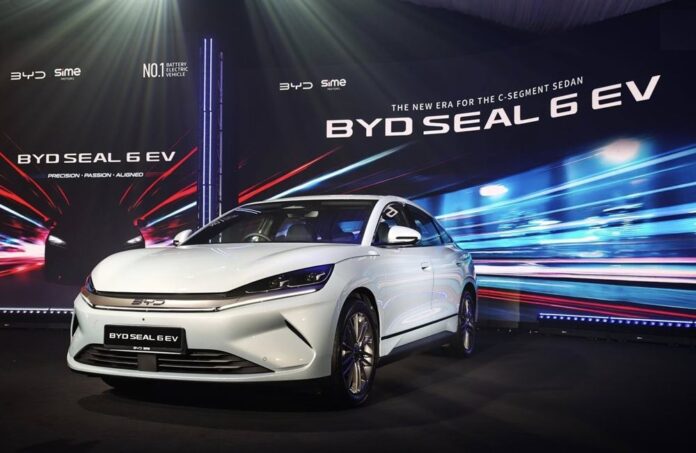In another first for Malaysia, BYD chose to have the first international launch of the all-new Seal 6 EV in this country. This is the seventh model (eighth if you include the DENZA D9) to be launched since the end of 2022 when BYD entered the market with the ATTO 3.
Already the global leader in electrified vehicles (which include hybrid electric vehicles), BYD has also been the No.1 EV brand in Malaysia with over 20,000 vehicles delivered to date through its business partner, BYD Sime Motors. Most of its models have been among the Top 10 each month, strengthening its leadership.
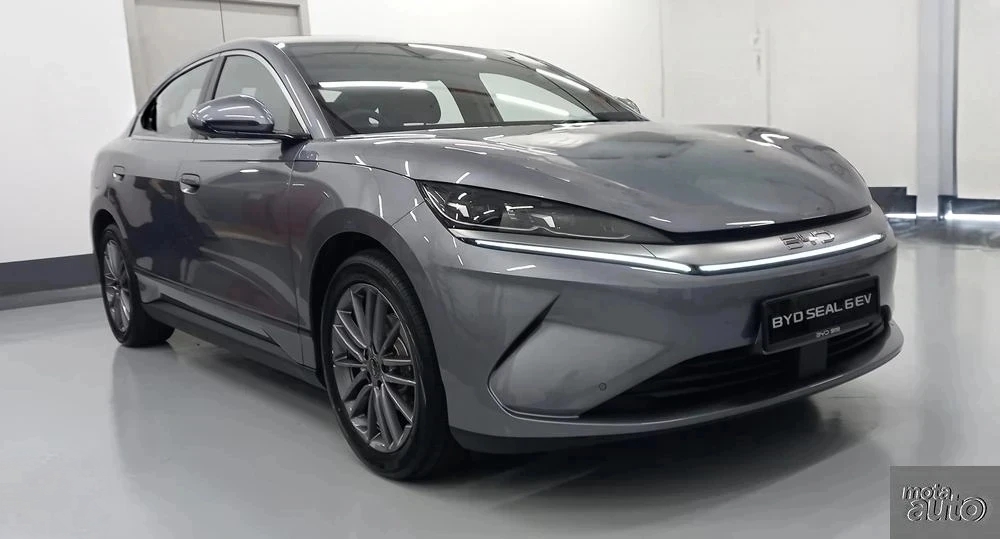
Priced from RM100,000
With the Seal 6 EV, BYD is set to pull away even more as it has a starting price of RM100,000 (without insurance) for the Dynamic version, while the Premium version is priced from RM115,800. This is a C-segment sedan and the largest in its class, certainly a strong point in a market where car-buyers like cars with a larger presence. Offering it at RM100,000 is certainly a game-changer and even those who have been hesitant to buy an EV may well consider the Seal 6.
When asked how BYD can offer the model at such a price, Eagle Zhao, Managing Director of BYD Malaysia, said that it is due to the automaker’s lower cost of production. He explained that BYD is strongly vertically integrated, meaning it makes many of the components and systems itself, thus having lower costs.
Crucially, the Blade batteries are also developed and made by BYD, which was a leading battery maker before it began making cars. As the battery is a major cost in an EV, being a producer of this item is obviously advantageous and greatly helps BYD to price its vehicles attractively.
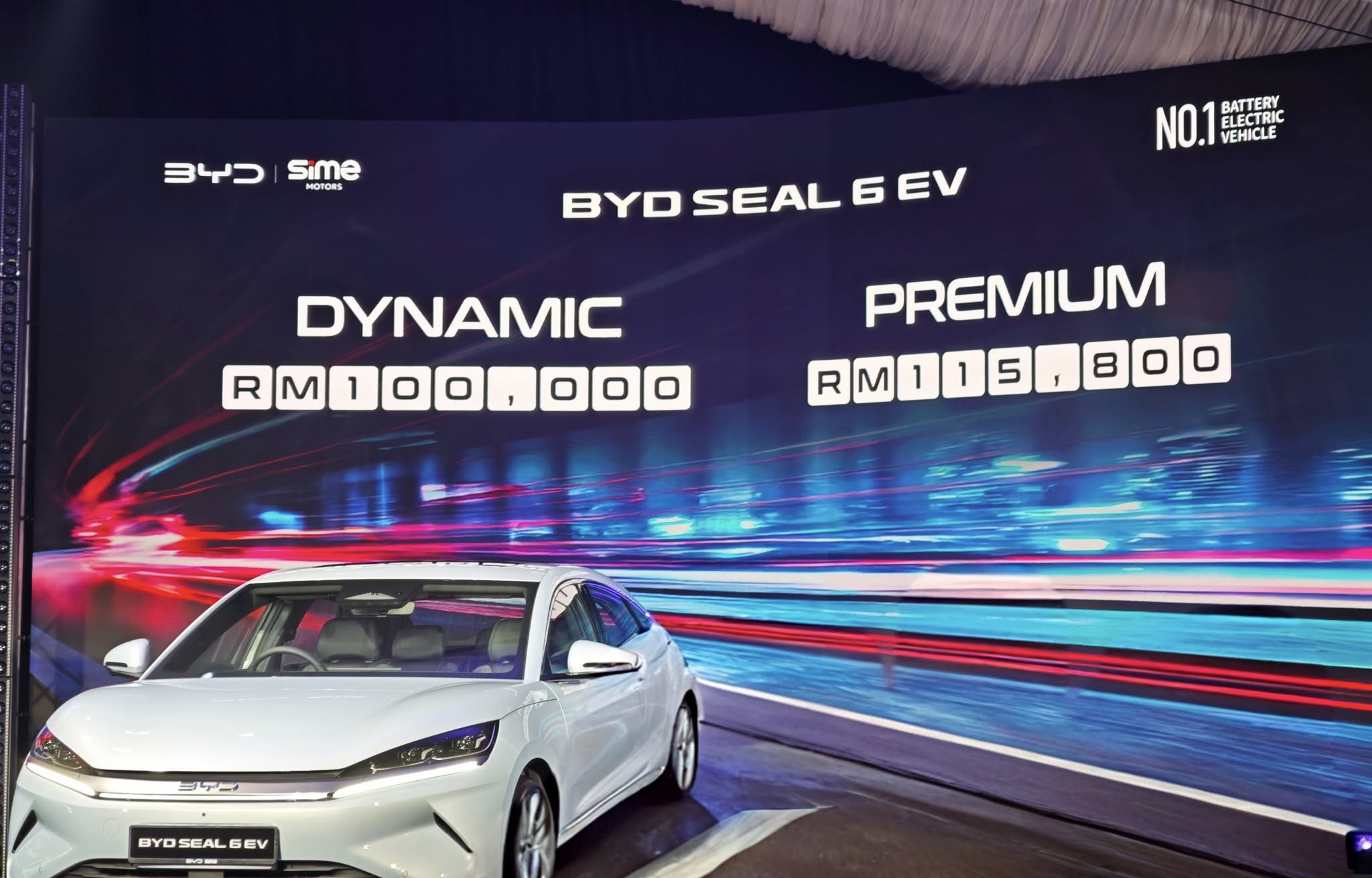
Choices for customers
The price point of RM100,000 is similar to that of the ATTO 2 which was launched in July this year. BYD Sime Motors believes that some people may not want a SUV and prefer a sedan, hence the addition of the Seal 6. “Some people may prefer a sedan, so we are giving them a choice for the same amount of money,” said Jeffrey Gan, Managing Director of Sime Motors, Southeast Asia.
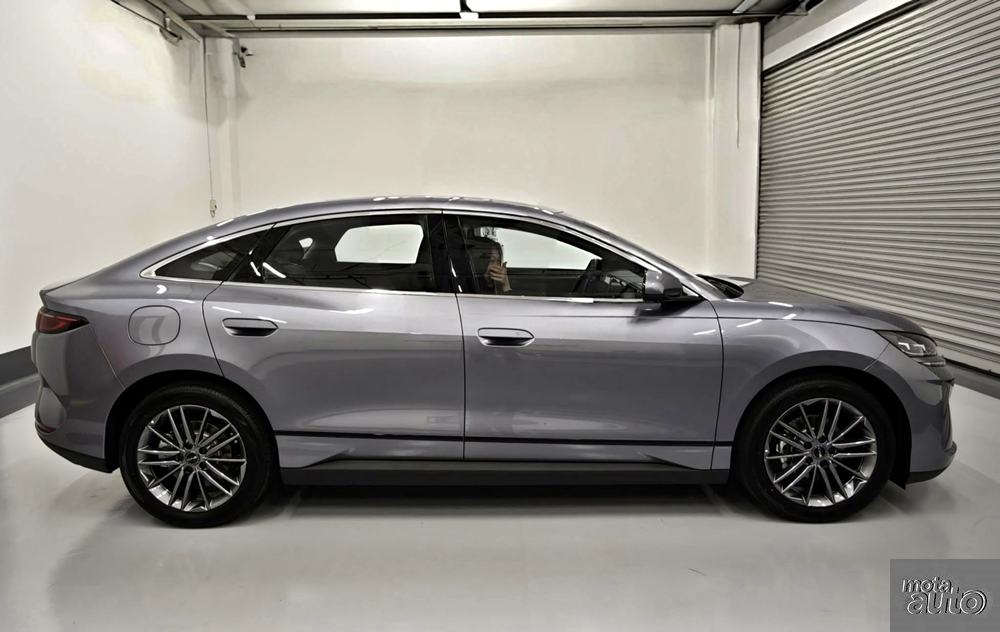
Largest C-segment sedan
The largest C-segment sedan rides on BYD’s e-Platform 3.0 which has been developed for greater safety and efficiency, more intelligence and larger cabin space. Integration is a key feature of the e-Platform 3.0 which has an 8-in-1 electric powertrain and a highly efficient heat pump. The powertrain integrates the Vehicle Control Unit, as well as the Battery Management System, Power Distribution Unit, Drive Motor, Motor Controller, Transmission and On-Board Charger.
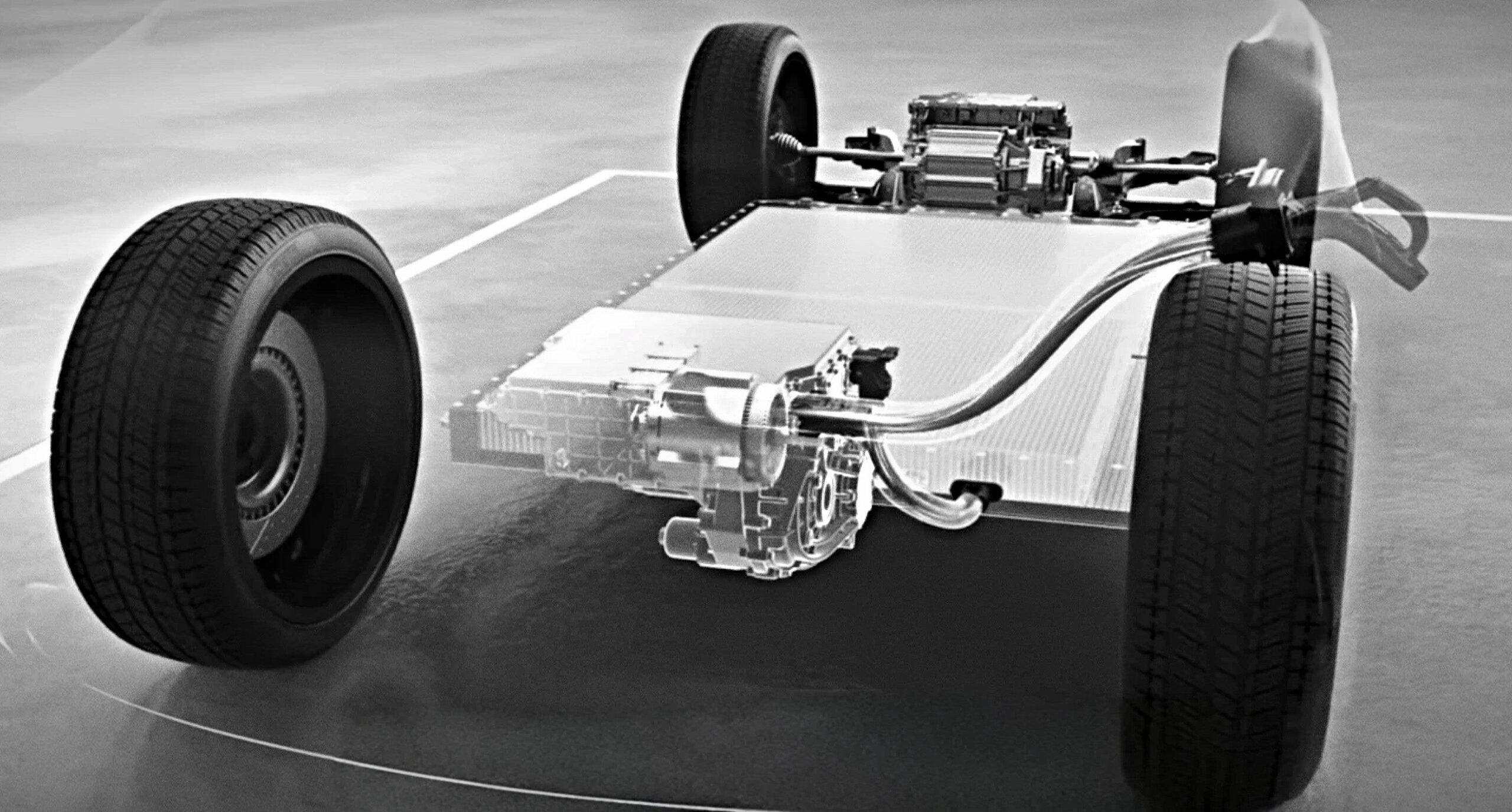
Such deep integration delivers 89% system efficiency, and includes the driving and braking functions, with an advanced powertrain domain controller for the rapid response and full utilization of the electric motors. As for software, BYD has independently developed the BYD operating system which decouples hardware and software, offering a collaborative system for high levels of intelligent driving.

Because the e-Platform 3.0 is designed specifically for EVs, it enables optimisation of structures for great efficiency and weight savings. It allows for a completely new body structure with shorter front overhangs, a longer wheelbase, lower centre of gravity, and more space.
Cell-to-body technology
The Seal 6 has Cell-to-Body (CTB) technology which integrates the Blade battery directly into the car’s chassis instead of being a separate element. This makes the battery pack a structural component that increases rigidity, enhancing protection and safety. The sandwich structure also helps to lower overall weight as well as liberate more space for the cabin.

So far, the CTB approach is still fairly new and its implications when the car is involved in an accident which can distort the structure is not known. Crash tests focus on how well the occupants are protected but the repairability of the structure is not really examined. With the battery as part of the structure, how easy will it be to restore a distorted frame?
Two powertrain outputs
The Blade battery comes in only one size of 56.64 kWh but the powertrain with a single rear-mounted motor is programmed to two different outputs. The Dynamic generates 95 kW (129 hp)/220 Nm while the Premium generates 160 kW (218 hp)/330 Nm. Although the Premium has a higher output, BYD Malaysia gives the same range of 485 kms for both powertrains.
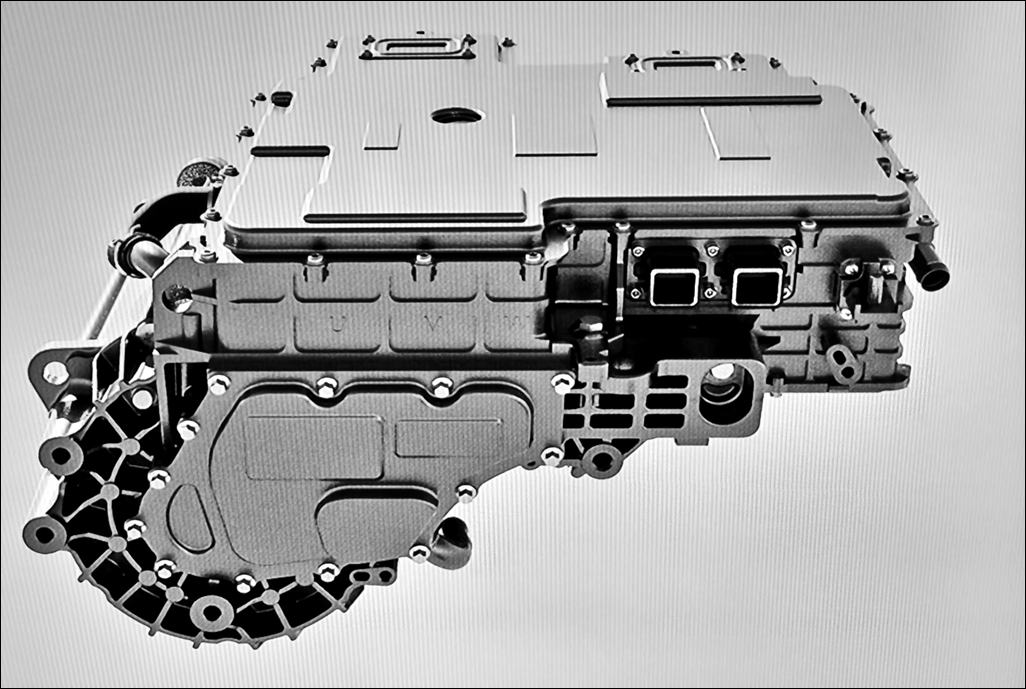
Charging time can be within 23 minutes from 30% to 80% if you use a charger with a 100 kW DC supply. With AC power (up to 7 kW), the time will of course be longer.
With the Seal 6 EV, BYD has switched to a LFP (lithium iron phosphate) battery for the 12V electrical system which powers most of the accessories and systems. Though 1 kg heavier than the conventional lead-acid type that has been used for decades, the LFP battery has certain advantages. It has a smaller size and a longer service life as well, moderating long-term running costs.

At this time, however, LFP batteries are not widely sold in the open market, so you can’t just call up a battery shop to buy one. That situation will probably change before long if more cars have LFP batteries. In the meantime, you would have to go to the BYD service centre to get one. Anyway, you would be going there for many years as the vehicle warranty is 6 years/150,000 kms.
Multi link rear suspension
The other highlight of the Seal 6 is its rear suspension. Generally, EVs have simple suspension layouts, usually a torsion beam. However, the suspension system of the Seal 6 is a notch above many EVs.
The front MacPherson strut has dual ball joints for quicker response, while the rear suspension has a 5-link layout with independent movement of each wheel. Extensive testing was also conducted for tuning the suspension to Malaysian road conditions.
![BYD Seal 6 EV [2025]](https://www.motaauto.com/wp-content/uploads/2025/09/BYD-Seal-6-EV-2025-2.jpg)
The independent movement of each wheel allows the tyres to maintain better grip on the road even if the surface is uneven. This improves stability and handling, as well as comfort. In the ‘elk test’ (swerving suddenly at high speed) conducted by BYD, the Seal 6 was able to safely make the manoeuvre at up to 80 km/h.
Spacious, high-quality interior
As with other BYD models, high-quality materials are evident in the spacious cabin. The overall layout and aesthetics are typical of BYDs EVs with a 12.8-inch centre display and a slim 8.3-inch panel for the instrument panel display. The centre display is fixed in the horizontal tablet format, unlike the ATTO 3’s which can be rotated into the vertical orientation.
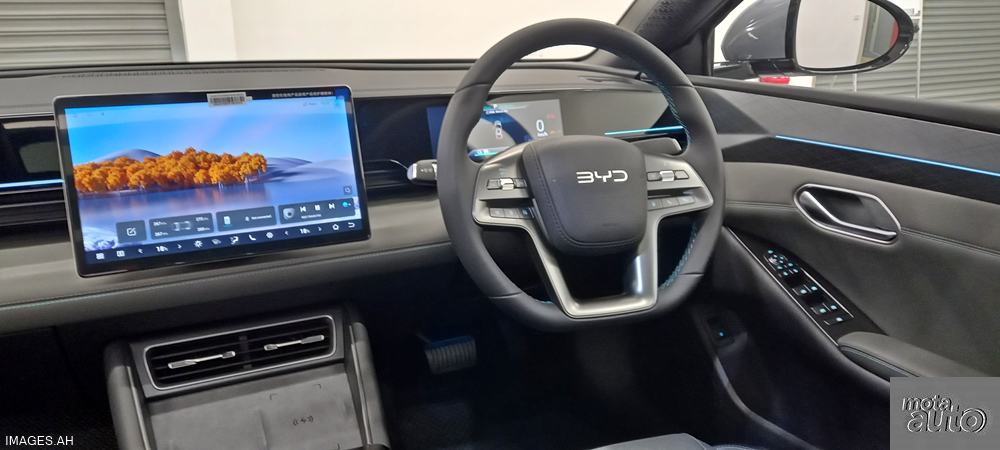
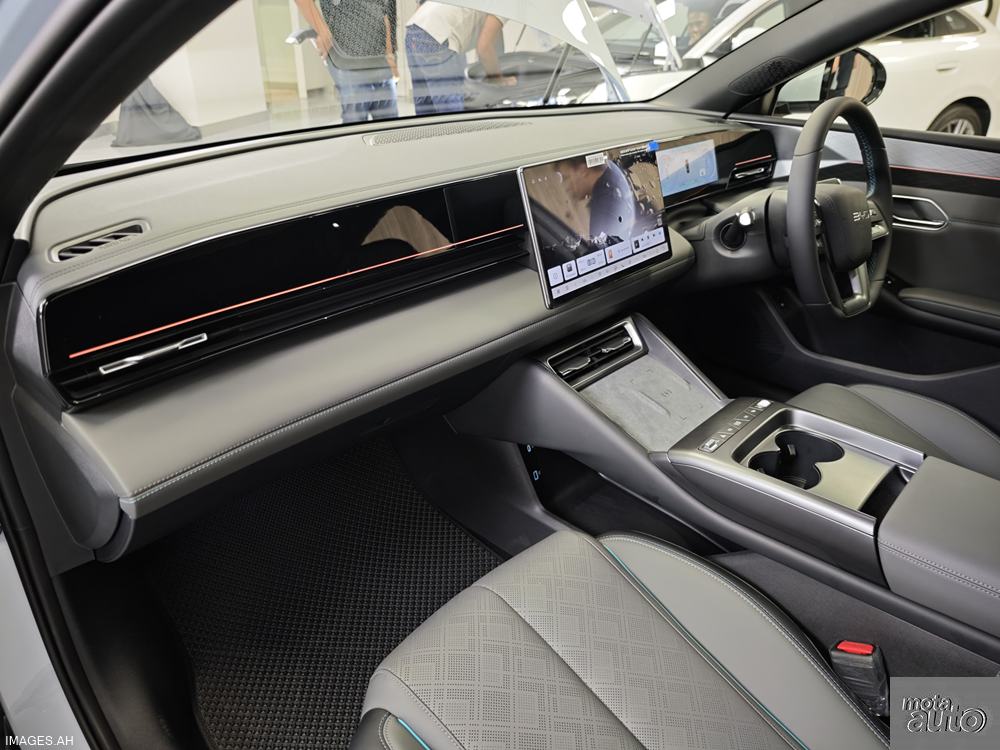
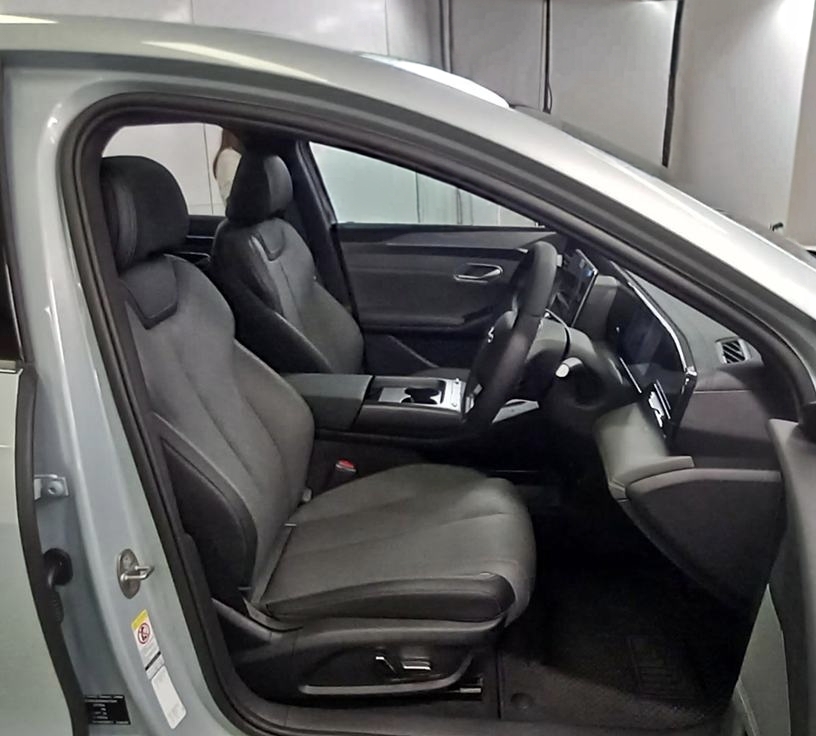
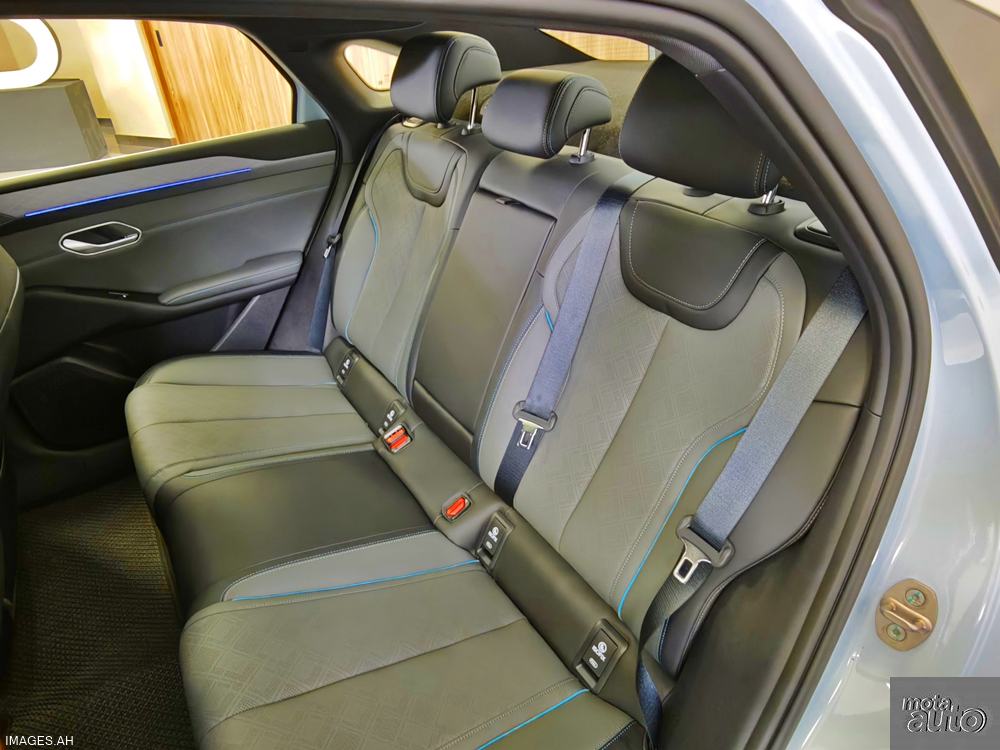
Multiple local languages
With its cars sold in many different countries, BYD has been attentive to language issues to make things more convenient for owners. For Malaysia, It provides language options in the voice recognition system to cater to different communities, rather than just forcing everyone to accept the default English language. As with the other models, there is also recognition of Bahasa Melayu, Mandarin plus Cantonese.
![BYD Seal 6 EV [2025]](https://www.motaauto.com/wp-content/uploads/2025/09/BYD-Seal-6-EV-2025.jpg)
The keyless entry (and keyless start) system has three methods – NFC, Bluetooth and a card. The first two make use of a smartphone and close-proximity signals. With NFC, tapping the smartphone on the door mirror housing on the driver’s side will unlock the doors. However, not every smartphone has NFC and there are still some people who may not have a smartphone. In such cases, the portable card can also unlock the doors and allow starting of the car.
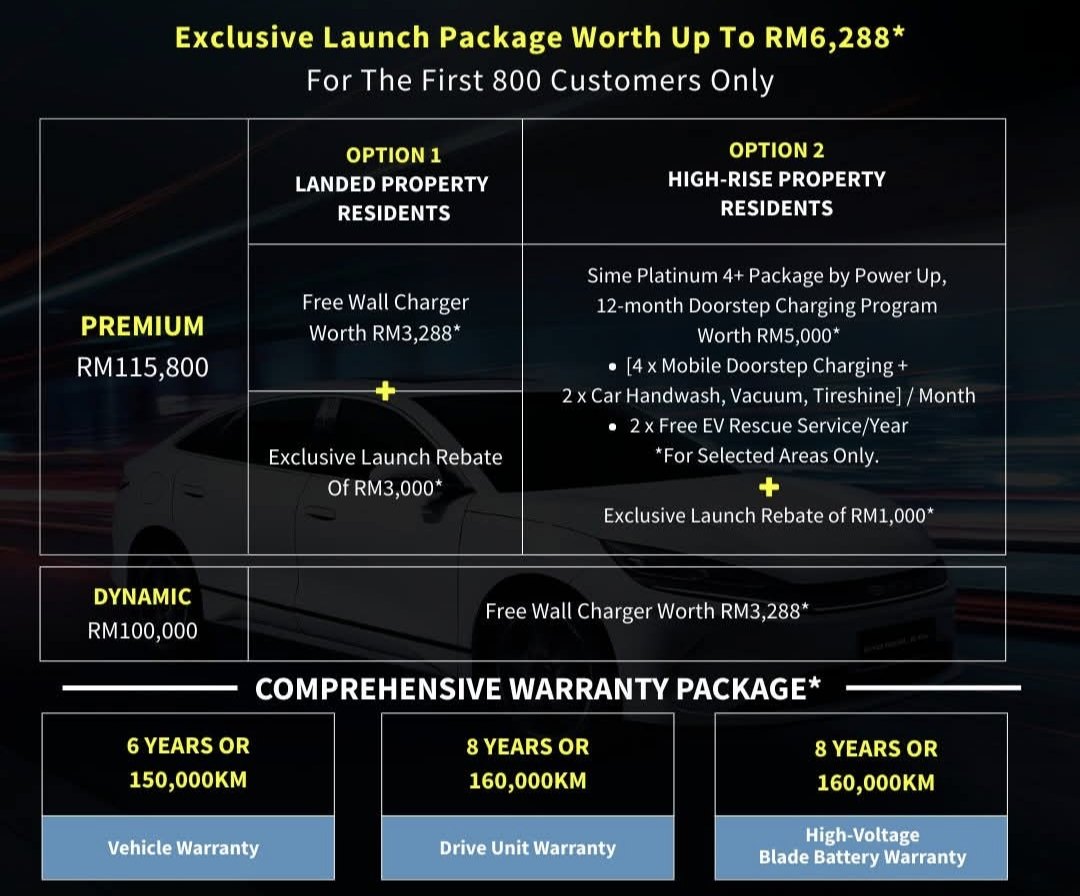
Be among the first in the world to test-drive the new Seal 6 EV at authorised BYD dealerships nationwide. If you like what you experience, order one right away and enjoy the extra benefits for the first 800 customers.
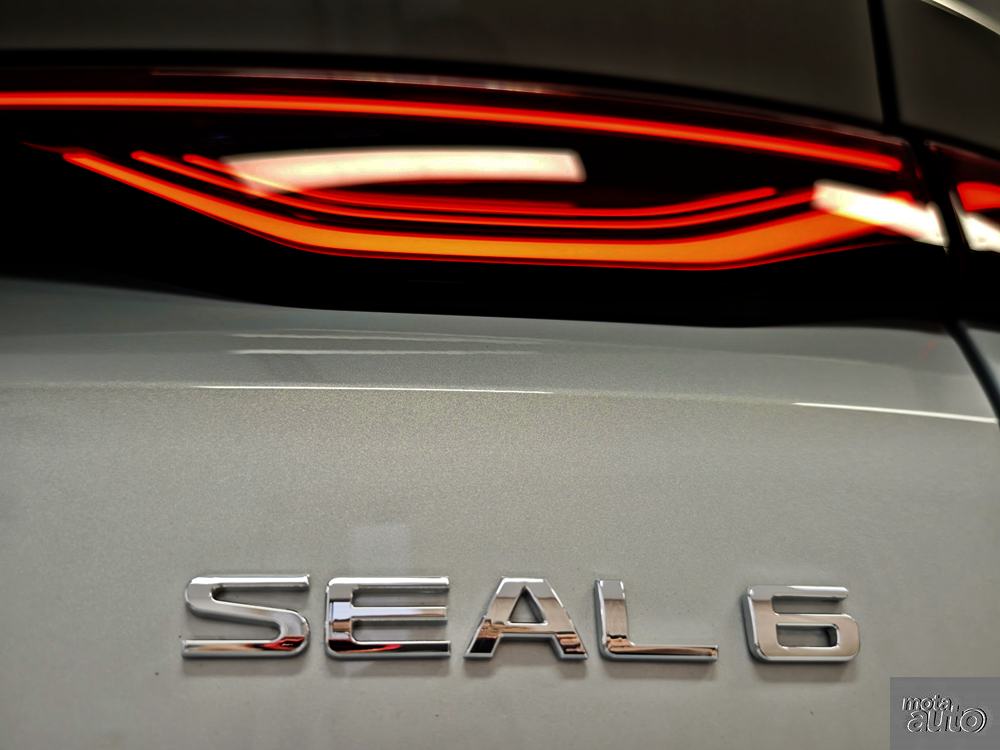
Click here to locate a BYD showroom near you or to know more about the models available in Malaysia.

